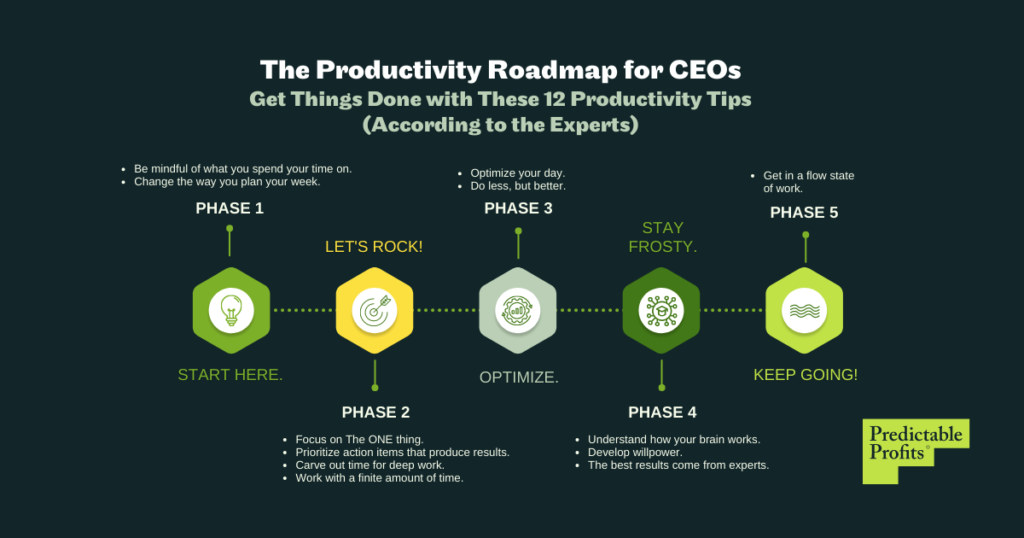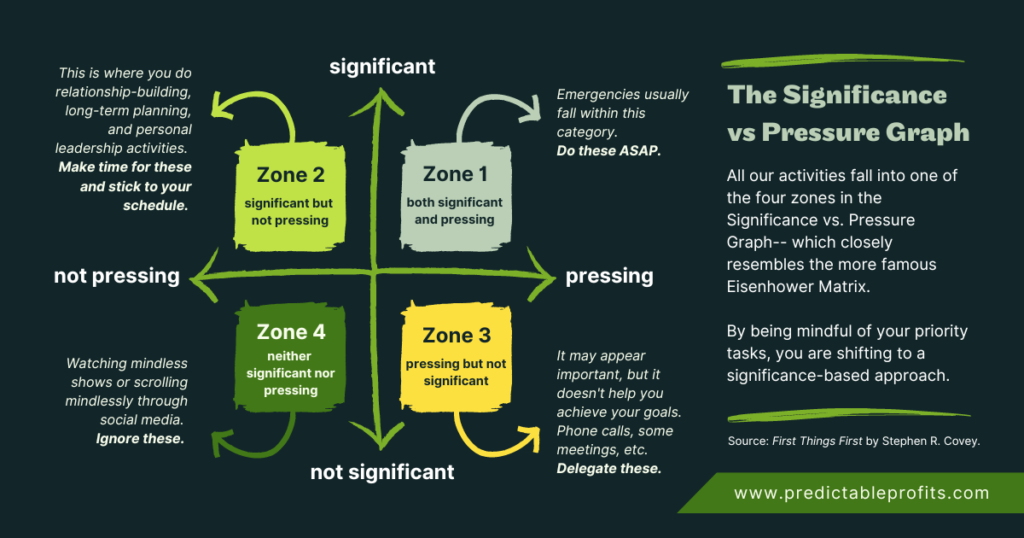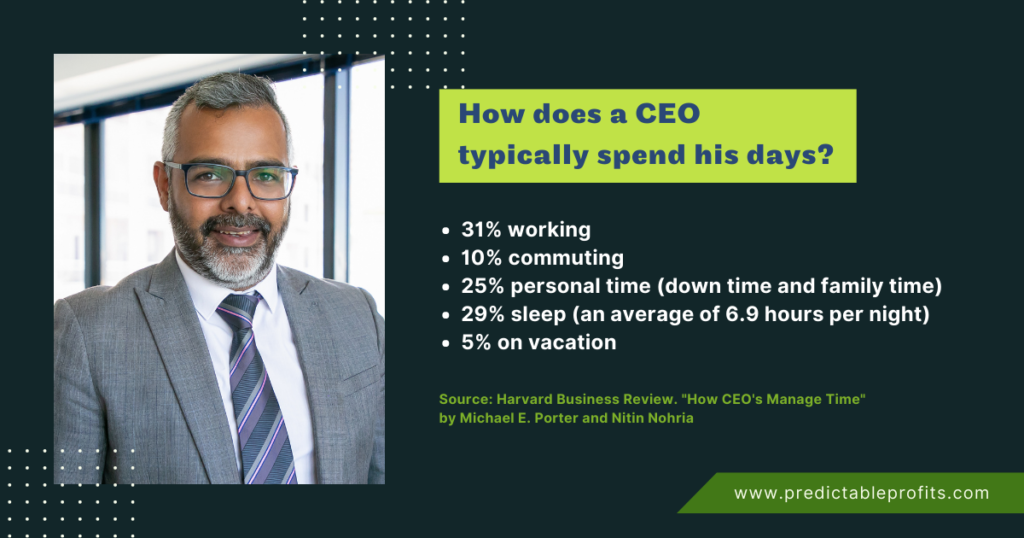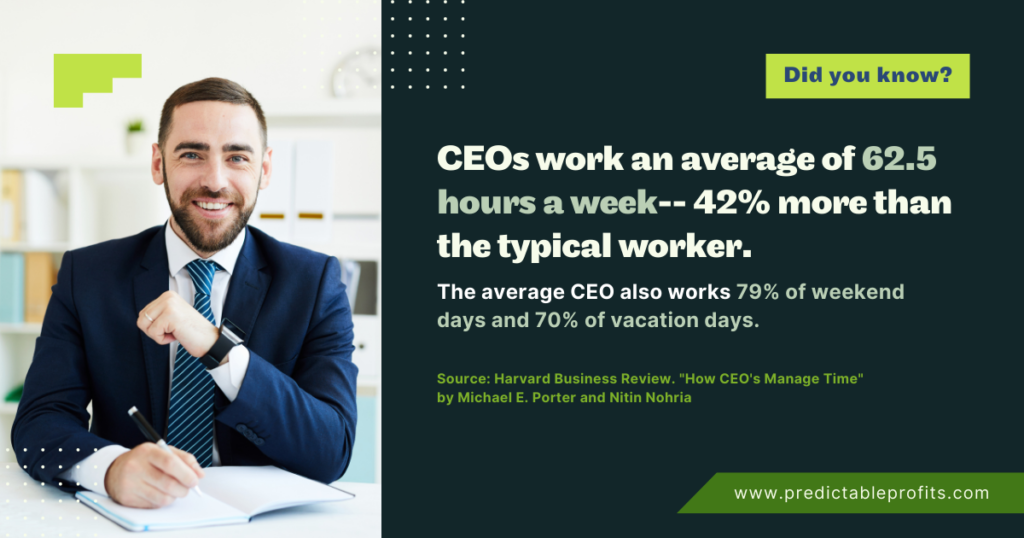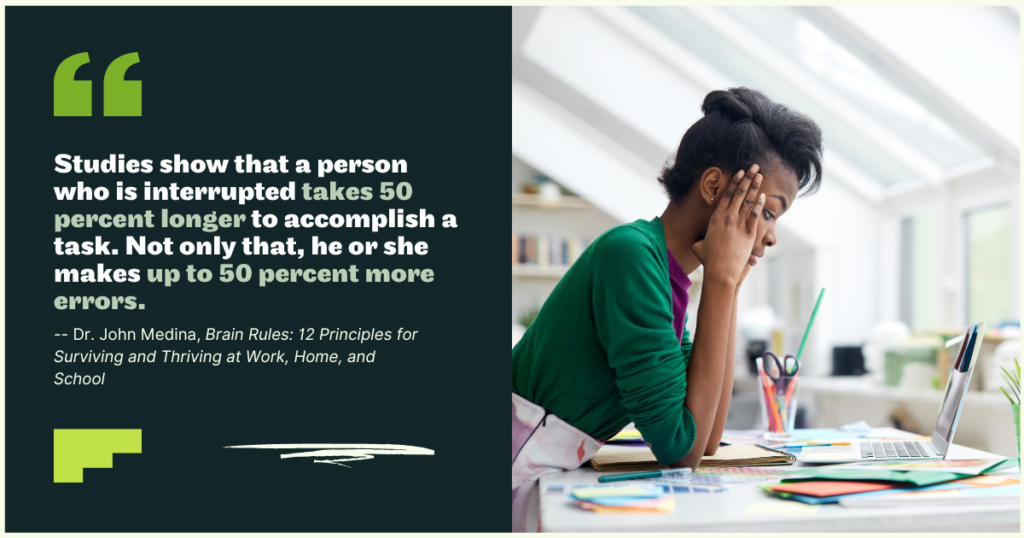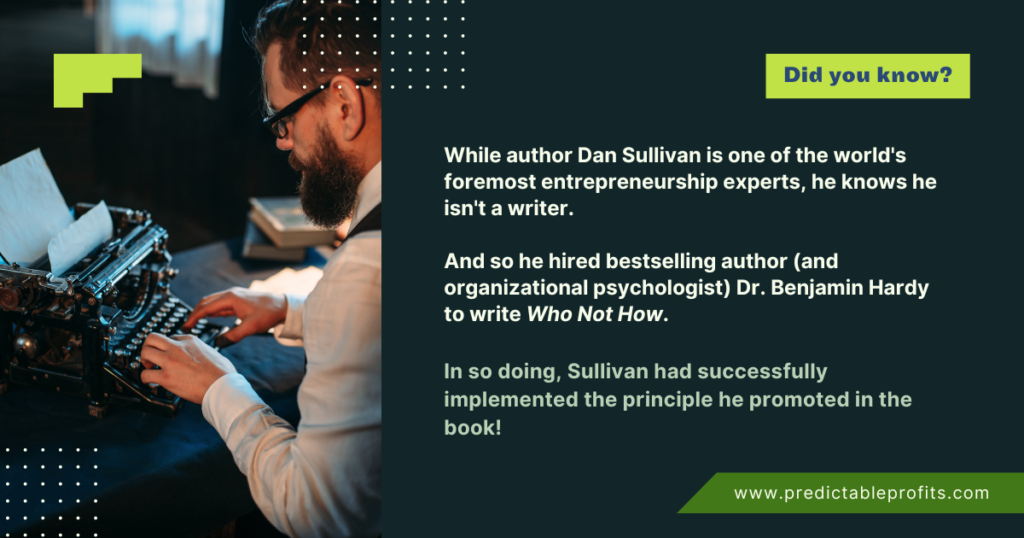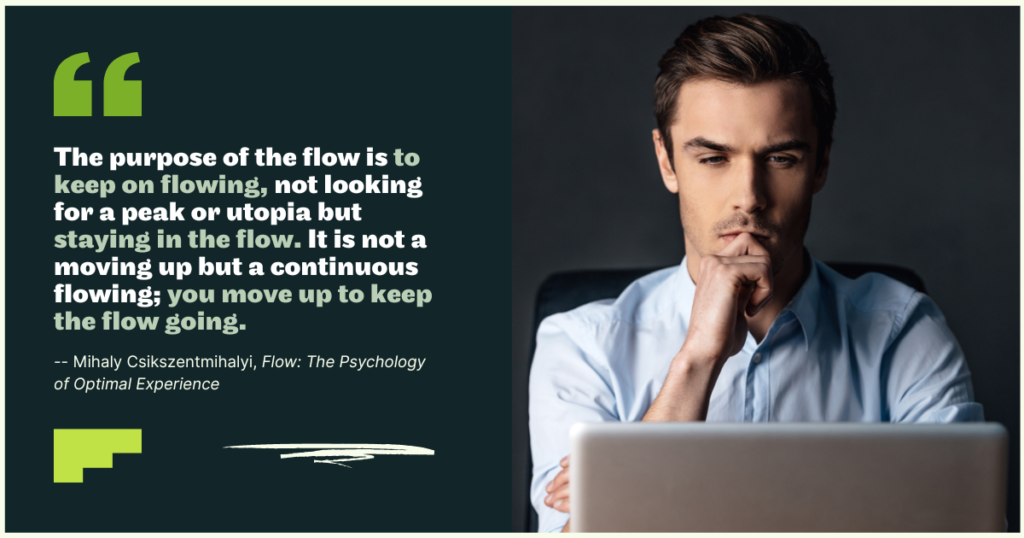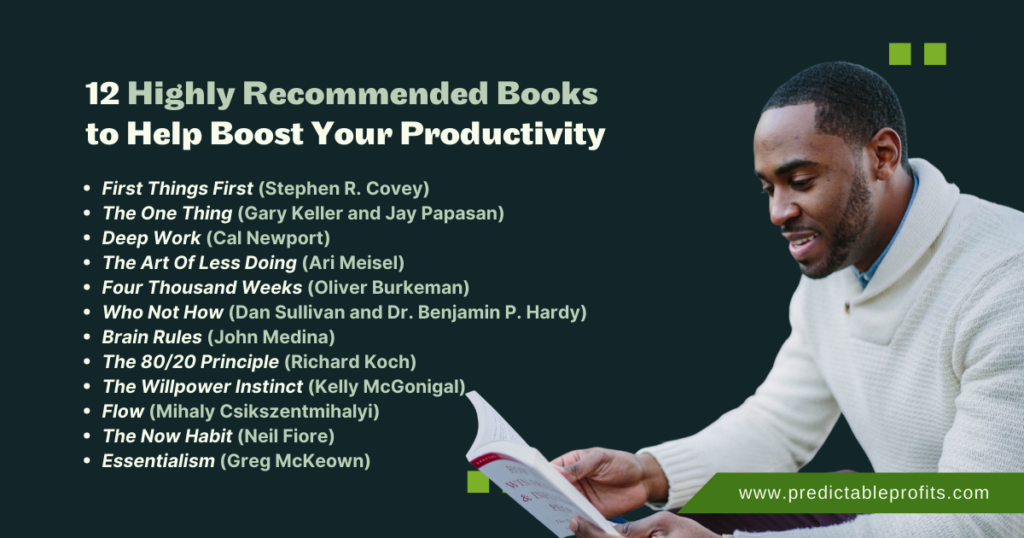Some CEOs are naturals at time management. Others need helpful support, such as getting expert advice, reading tips and tricks to improve productivity, or following a productivity roadmap.
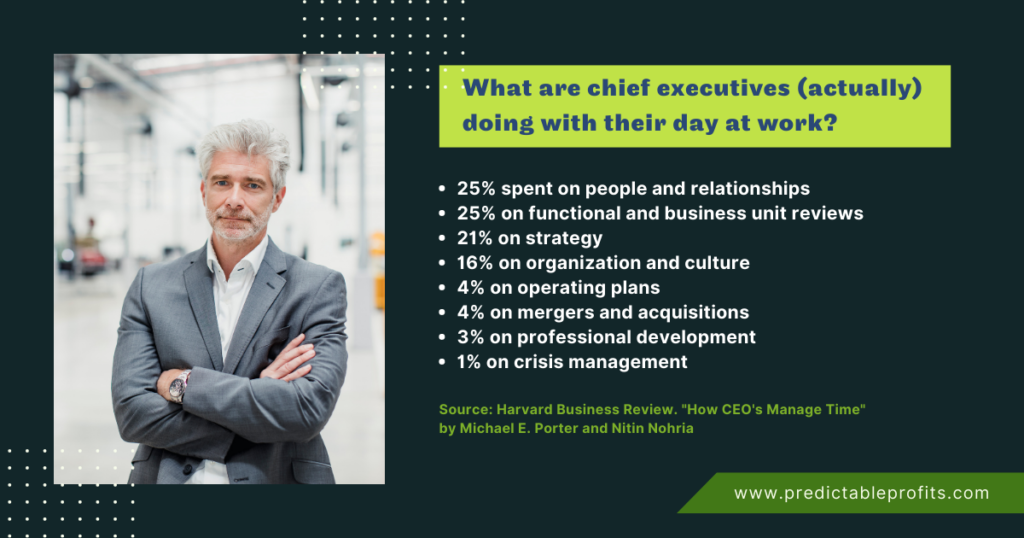
A CEO’s job is relentless. According to an exhaustive study published in the Harvard Business Review, the typical CEO works, on average, almost 10 hours (9.7) per weekday. They also conduct business on 79% of weekends and 70% of vacation days.
With such a grueling schedule, it’s no wonder productivity is such a hot topic within top executive circles. After all, there’s always more to do and never enough time to get it all done.
High-performing CEOs have a personal productivity roadmap to stay ahead of the curve. From time management systems to goal-setting and leveraging automation, digital tools, and outsourcing, these executives have ways to increase productivity and ensure they complete tasks on target.
Keep in mind, however, being productive doesn’t mean working yourself to the bone. It’s about working smarter, not harder.
Here are 12 productivity tips and tricks built into your roadmap to help you squeeze more productivity out of your day:
- Be mindful of what you spend your time on.
- Change how you plan your week (to counteract procrastination).
- Focus on the “one thing.”
- Prioritize action items that produce results.
- Carve out time for deep work.
- Be realistic: accept you’re working with a finite amount of time.
- Optimize your day (with less doing)
- Practice essentialism: do less, but better.
- Understand how your brain works.
- Develop your ability to activate your willpower.
- The best results come from experts.
- Get in a flow state at work.
Let’s dive into each one in greater detail.
Would you like to know more about sustainable and robust business growth for your brand? Check out this related article, “The Predictable Profits Guide To Growing Your Business.”
1. Be Mindful of What You Spend Your Time On.
Note: you could create your own productivity roadmap or build one from what we have presented here. Whatever the case, always start from a position of mindfulness. Know what you’re all about– especially your goals and your roles.
Stephen Covey, renowned author of The 7 Habits of Highly Effective People, believes in getting work done through mindfulness — and takes this concept a step further in his book, First Things First.
He argues that focus is more important than efficiency. Because focus requires self-awareness and getting to the root of why you are doing something.
We live in a time when we celebrate “busyness” as a sign of success. Still, Covey emphasizes that being mindful of your priorities leads you toward effectiveness.
Because when you are mindful of your priority tasks, you shift to a significance-based approach.
Here are several tips from First Things First:
- Identify your long-term vision and personal mission. These give you meaning and determine what you want to achieve in your life.
- Identify your key roles. When people feel dissatisfied, it’s often because they excel in one or two roles at the expense of others.
- Set Zone 2 goals for each of these critical roles. You need to focus on goals you can do in the next seven days. But make sure these align with your personal mission and make a significant, long-term difference.
- Schedule your Zone 2 goals each week. When mapping out your week’s activities, start with important (Zone 2) tasks. Planning within the framework of a week allows you to get a big-picture perspective while having everyday actionable items.
- Take on each day within the context of your weekly goals. Start each morning by reviewing your schedule for that day. Prioritize your scheduled tasks. Go through your day’s list and look for time-sensitive commitments.
- Review and learn from your week, month, or quarter. Reflect on your patterns of success (and failure) and adjust your approach accordingly to help push you forward.
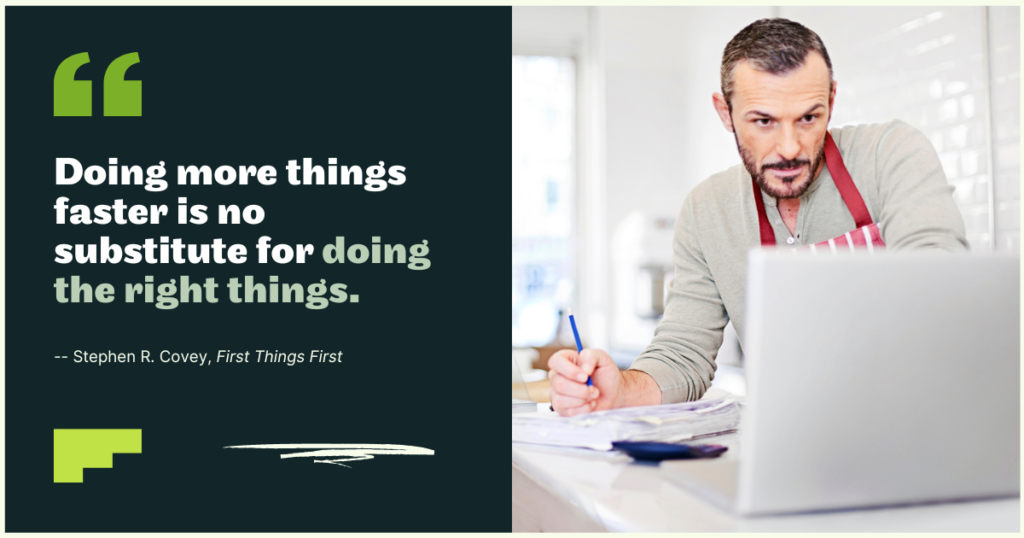
2. Change How You Plan Your Week (to Counteract Procrastination).
Psychologist and productivity trainer Neil Fiore’s classic, The Now Habit, is all about overcoming procrastination by understanding why we do it.
One way to combat procrastination tendencies is to change how you plan your week. The idea is to use specific time-management techniques to counteract procrastination before it has a chance to start.
First, plan your week around your leisure time, not your work. Start by writing down appointments and necessary activities such as eating and sleeping. Then add time for play, socializing, hobbies, self-care, and so on.
(Fiore recommends scheduling at least half an hour of recreation or relaxation per day. As well as dedicating one day that you’re completely free of work!)
Following these guidelines forces you to see how little time you have for work in a given week. This, in turn, motivates you to make the most of your time.
In doing so, you guarantee your time for play, don’t feel guilty for doing so, and reduce your resistance to work by making it seem less overwhelming.
Next, don’t schedule your work — track it. Fiore advises against scheduling work in advance. Instead, he recommends you record work as you do it throughout the week and follow these rules:
- Only record blocks of work after you do at least half an hour of uninterrupted quality work on a project (one Pomodoro worth).
- Take a break after each block of work.
- Total up your hours of quality work each day and for the whole week. Then celebrate your accomplishments.
With this system, you can break your work into manageable chunks without getting overwhelmed. You also recharge your motivation and creativity and give yourself positive reinforcement as you watch your tally of hours accumulate.
3. Focus on “The ONE Thing.”
Now that you have a better understanding of your goals and key roles, it’s now time to take action with your productivity roadmap. Zero in on what’s really important right now; you can worry about making adjustments to your system later.
Real estate entrepreneur Gary Keller argues that the key to extraordinary success is focusing daily on The ONE Thing.
When you prioritize the right thing at the moment, everything else falls into place like a progression of dominoes.
Success is sequential. Success builds on success. Small wins lead to bigger wins.
You build energy (momentum) in a geometric progression. So think big, then narrow your focus until you’re thinking small — the one thing you can do now to help you get to where you ultimately want to go.
- Focus on the few high-impact items on your list.
- Give each item your undivided attention (do not multitask).
- Success isn’t a result of ongoing discipline. It results from applying discipline long enough for a new habit to stick and become effortless and automatic.
- Your willpower is your battery. Use it wisely. Conserve it for when you know you’ll really need it. Recharge with sleep and a healthy diet.
- Live a counterbalanced life. Let the right things take precedence, and tackle the rest when you can.
- Think big. Act boldly.
Ask yourself: What’s the one thing I can do such that by doing it, everything else becomes easier or unnecessary? That’s your focus.
“Focus time” (or as some people are known to call it, “magic time”) is time you should spend working ON your business, not in it. Read more about it here: “Eliminate Distractions for a Productivity Boost.”
4. Prioritize Action Items That Produce Results.
According to Richard Koch, author of The 80/20 Principle, 80% of results flow from 20% of inputs.
This 80/20 relationship is attributed to Italian economist Vilfredo Pareto. Hence, the Pareto Principle.
What this means is, you must spend more time on what matters and less time on what doesn’t.
The typical executive wastes tremendous energy and effort on tasks that ultimately don’t matter — every email, every meeting, every instant message, and so on.
This leads to widespread inefficiency, dissatisfaction, and missed opportunities.
Koch suggests focusing on the 20% of tasks responsible for 80% of your productivity.
You can streamline your business by simply applying 80/20 reasoning.
- Outsource activities (to allow your team to focus on the fewer items they do exceptionally well).
- Reduce miscellaneous inputs (to eliminate the least profitable areas).
- Downsize management (to free up your staff to deliver superior value to customers).
- Hire more top performers (like the top 20% you already have).
- Revisit past customers (to encourage repeat business).
- Hire a project manager (to keep employees focused on 20% of critical tasks).
- Innovate new high-performing products or practices (to drive your company’s future).
5. Carve Out Time for Deep Work.
Getting tasks done in the information economy is no easy feat, but getting into a state of deep work can be immensely rewarding.
Deep work is an intense focus on tasks that require the utmost concentration and push your cognitive abilities to their limit.
Author Cal Newport argues that it is getting easier to do shallow work, such as distributing content over social media, responding to emails, etc. Still, the real challenge lies in developing the skills and discipline required for deep work.
You can expect to increase your productivity and output by mastering deep work. Achieving this level of focus takes effort, which is why you need to carve out time.
You must approach deep work with structure, habit, and discipline — like a practiced ritual.
- You might decide to seclude yourself to get deep work done. A couple of hours each day, a day each week, or however much you need.
- Plan out your day. Schedule your internet time (and avoid it otherwise), and plan your day according to how much time goes to deep work and other tasks (such as email, meetings, etc.).
- Set ambitious deadlines. Giving yourself intense deadlines forces you to concentrate to the limit of your ability (see Yerkes-Dodson Law).
- Build your deep-work-only environment. Get rid of distractions. Limit email, social media, and instant messengers.
- Make the most of your focused time. Focus on what’s important. Use the right metrics. Keep your metrics visible. And create accountability where possible.
6. Be Realistic: Accept You’re Working with a Finite Amount of Time.
Despite your best efforts to manage your time and maximize productivity, you never have total control over your time.
Oliver Burkeman, author of Four Thousand Weeks, recommends accepting that you only have a finite amount of time. And you must operate within realistic parameters to make your life as enjoyable and meaningful as possible.
How?
- Make time for critical tasks now. Prioritize tasks that matter most by making time for them before you do anything else.
- Limit your in-progress projects. Don’t take on more commitments than you can handle. Limit yourself to three projects. Only take on new ones after you complete previous tasks.
- Resist distraction by having a tolerance for discomfort. This enables you to view tasks as less unpleasant and see them through to completion.
- Stop expecting the future to unfold as planned. Be open to the future veering away from the plans you created.
- Develop patience for the current pace of life. Pay greater attention to the world around you and force your mind to slow down to avoid burnout and too much stress.
- Align your free time with the people you want to spend time with. Join after-work group activities and form connections. These help lower your stress and allow you to recharge.
For even more insights on productivity, check out our two-part feature:
7. Optimize Your Day (with Less Doing).
Your own productivity roadmap is a work in progress. You should always take notice of how you work around your own rules and constantly optimize, doing a little better each time.
For many CEOs, overwhelm and exhaustion is far too common. You feel like you’re missing out on what you really want to do.
According to productivity guru Ari Meisel, best-selling author of The Art of Less Doing, you can achieve peak productivity levels through three key elements: optimizing, automating, and outsourcing.
To begin optimizing, you must know what you do throughout your day. Only then can you make improvements for maximum productivity.
- You have about 90 minutes of peak productivity in your day. You must know when this is and take advantage of the time.
- You should also know your peak creative time within the same day.
- Knowing when you’re most productive and most creative allows you to schedule your tasks accordingly, with the non-essential tasks filling out the rest of your working day.
- You also want to organize similar tasks in batches, such as all email or content writing, so you can focus on these together and avoid switching between tasks.
- Finally, use the 3-D triage system to make quick decisions about your tasks. Delete tasks (if they are unnecessary), defer them (to a later time), or deal with them immediately.
8. Practice Essentialism: Do Less But Better.
If you feel overworked but underused, it’s likely because most of what you spend your time on isn’t necessary.
According to Greg McKeown, author of Essentialism: The Disciplined Pursuit of Less, many of us are “majoring in minor activities.” And the way out of this trap is to “do less but better.”
This is what essentialism is all about — the consistent and focused pursuit of less but better. You stop regularly to ask yourself whether you’re spending time on the right things.
Essentialism means differentiating among your options and selecting to do just a few essential activities.
Two points to keep in mind:
- Decide on your intent and purpose. This makes many further decisions unnecessary, or subsequent choices fall into alignment. This way, you make your optimum contribution to the activities that matter most.
- One of the most crucial skills for practicing essentialism is learning to say ‘no.’ You must learn to say “no” gracefully and even get people to respect you for it in the process.
Looking for more ways to maintain focus in today’s age of distractions? Check out the Beyond 7 Figures podcast episode with productivity and focus expert, Penny Zenker
9. Understand How Your Brain Works.
Keep in mind that your productivity roadmap is a huge opportunity to learn more about yourself and how you can maximize your time, willpower, and energy throughout your entire day or week at work.
Dr.John Medina, author of Brain Rules, has 12 rules that help fulfill your brain’s core functions.
According to Medina, once you understand how your brain evolved, you can work with your natural impulses and tendencies to improve your thinking and learning.
Of these 12 rules, a few stand out for helping maximize productivity:
- You must find ways to incorporate exercise into your daily routine. Exercise boosts cognition by increasing blood flow to the brain, helping carry out essential cognitive abilities such as memory, focus, and problem-solving.
- Get enough quality sleep. Sleep is an essential brain function that enables learning. When you don’t get enough sleep, your cognitive abilities suffer.
- Avoid chronic stress. Stress interferes with your brain’s ability to learn. Chronic stress can degrade memory, hurt your ability to form new memories, and learn new information.
- Use more than one sense at a time to improve your learning. The brain evolved to absorb and make sense of many sources of information simultaneously. We developed this ability so effectively that our brains work best when doing so.
- Use visual aids to improve learning. Vision is your dominant sense. It shapes your perception of the world and influences learning and memory.
- Play and listen to music. Music can improve cognition. Music not only leads to improved auditory skills, but it also helps improve language, social skills, and emotional skills.
- Multitasking doesn’t work. The more you focus on something, the better you learn and remember it.
- Strengthen your memories through repetition.
- Learn by exploring. We have an instinctive, strong desire to explore that drives us to learn about the world.
10. Develop Your Ability to Activate Your Willpower.
Stanford psychology professor Kelly McGonigal, author of The Willpower Instinct, details how natural willpower gets compromised by stress, distraction, lack of sleep and exercise, as well as a host of other factors.
And yet you need willpower every day — whether you run a business, train for a marathon, or give up sugar to eat more vegetables.
Your ability to activate your willpower every day impacts your health, relationships, career, financial security, and how you feel about yourself.
The foundation for gaining more willpower is understanding your self-control traps and pitfalls. Understanding how and why your self-control falters helps create strategies to succeed.
So how do you build your willpower?
- Train your brain through meditation. Even a five-minute daily practice focusing on breathing and quieting your mind can increase your impulse control.
- Manage your stress. Breathe slower (try to get down to only four or six breaths per minute). Get long-term, habitual exercise. Sleep more.
- Use your peak willpower hours. Willpower gets depleted. Once this happens, even your best intentions can backslide. For most people, self-control is highest in the morning and diminishes as the day progresses.
- Instead of paying yourself today for the work you do tomorrow, create a future-based framework that serves your long-term goals. Eliminate the mental crutch of believing that tomorrow will be different.
- Watch your dopamine triggers. Figure out the difference between real rewards (i.e., those that make you happy and fulfilled) and false rewards (i.e., those that only serve to distract). Remember, dopamine can lead to addiction since it makes the brain crave a reward, but it never satisfies that craving.
- When you lose your way, forgive yourself for giving in.
- Make your temptation hard to get. Give your willpower a window of opportunity by making temptation harder to achieve.
11. The Best Results Come from Experts.
For CEOs, time management is crucial. You are responsible for the entire company’s results. As such, you always have tasks waiting for you. But, remember, there’s always a better way to spend your time.
Don’t worry about how to solve a problem yourself. Why?
- You’re limited to what you can do alone.
- You’re forced to spend your time and energy (which you can spend elsewhere).
- You become a bottleneck that slows everything down and stunts business growth.
Great success comes from consistently achieving excellent results — not from minimizing costs. And the best results come from experts.
For scrappy, bootstrapping business owners, this might require a mindset shift. But according to Dan Sullivan and Dr. Benjamin Hardy, authors of Who Not How, it is the quickest way to achieve stellar outcomes.
- You get top-quality results (because experts deliver results faster).
- You leverage experience and expertise.
- The result is always better than anything you could do yourself.
By hiring the right personnel, you free up more time for yourself. You can spend this time better on tasks that grow your company or whatever you do best.
12. Get in a Flow State at Work.
With everything you’ve learned on the productivity roadmap thus far and knowing your strengths and areas of improvement, you now have a system to better manage your time and energy at work and in your personal life.
Continue to refine your system and use your productivity roadmap to just keep moving ahead and powering through your set tasks.
According to Mihaly Csikszentmihalyi, author of Flow, people are happiest when they feel in control of their inner thoughts and feelings. They experience a “flow state” or a sense of enjoyment, purpose, and meaning.
Csikszentmihalyi says activities that put you in a “flow state” as frequently as possible have three main benefits:
- You become more self-confident and invest energy toward goals you deem worthwhile.
- You improve your experience of life.
- You become a more complex individual; your consciousness is well-ordered, and you feel in balance with the different parts of who you are.
The goal is to find flow at work. You can experience flow when you deal with an above-average number of challenges and use an above-average number of skills.
You find flow at work by:
- Adapting to opportunities and taking advantage of them.
- Pursuing work that’s likely to produce flow experiences.
With flow, you can concentrate on an activity for an extended period of time. You feel a sense of control. You’re absorbed in your tasks, and they feel almost effortless. You do not think about stress or other worries. You enjoy work.
Check out this project management system that could keep you more organized while maintaining a state of flow. Listen to the Beyond 7 Figures podcast episode with psychologist and productivity expert Sophie Chiche.
The Reading List
For a deeper dive into productivity, check out this list of references we’ve used for this article:
- First Things First (Stephen R. Covey, A. Roger Merrill, Rebecca R. Merrill)
- The Now Habit: A Strategic Program for Overcoming Procrastination and Enjoying Guilt-Free Play (Neil Fiore)
- The One Thing: The Surprisingly Simple Truth Behind Extraordinary Results (Gary Keller and Jay Papasan)
- The 80/20 Principle: The Secret to Achieving More with Less (Richard Koch)
- Deep Work: Rules for Focused Success in a Distracted World (Cal Newport)
- Four Thousand Weeks: Time Management for Mortals (Oliver Burkeman)
- The Art Of Less Doing: One Entrepreneur’s Formula for a Beautiful Life (Ari Meisel)
- Essentialism: The Disciplined Pursuit of Less (Greg McKeown)
- Brain Rules: 12 Principles for Surviving and Thriving at Work, Home, and School (John Medina)
- The Willpower Instinct: How Self-Control Works, Why It Matters, and What You Can Do to Get More of It (Kelly McGonigal)
- Who Not How: The Formula to Achieve Bigger Goals Through Accelerating Teamwork (Dan Sullivan and Dr. Benjamin P. Hardy )
- Flow: The Psychology of Optimal Experience (Mihaly Csikszentmihalyi)
Conclusion: A Final Word on The Productivity Roadmap for CEOs
CEO productivity is critical to company success. It ensures you benefit from every available opportunity.
A productivity roadmap helps you manage and maximize your time and energy for the best results.
High-performing CEOs create winning strategies to make the most of time constraints. While some have natural productivity levels, others need helpful support through advice from experts, or from tools such as apps, or guides like a personal productivity roadmap.
Invest in yourself by reducing distractions, prioritizing responsibilities, delegating tasks, and setting goals with achievable timelines. By taking the extra initiative to improve your ability to get things done efficiently, you position yourself for more success over the long run.
Be part of our ever-growing community of seven- and eight-figure business owners:
- Check us out on the Predictable Profits YouTube channel.
- Connect with us on Linkedin.
- Join other entrepreneurs (like yourself) on our Facebook page.
- And if you haven’t already, sign up for our daily business coaching video series (by entering your email address below).

